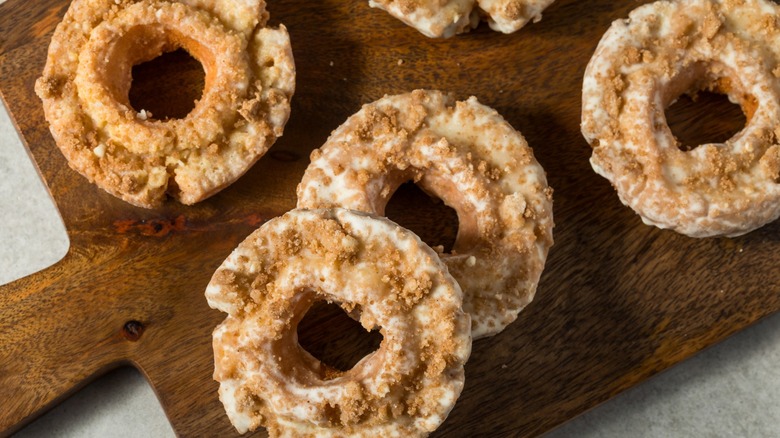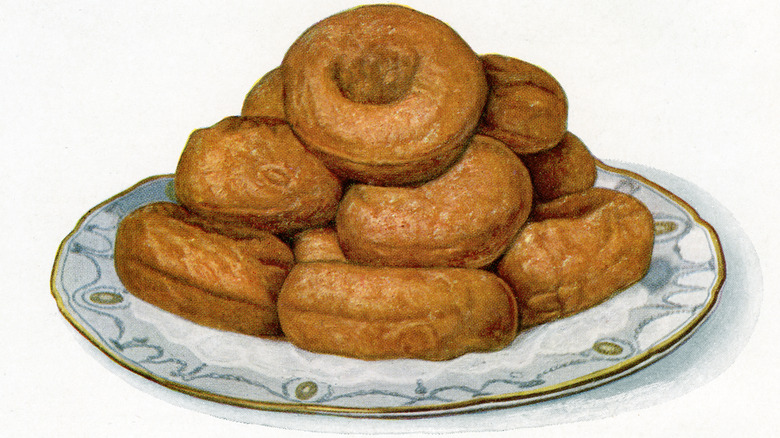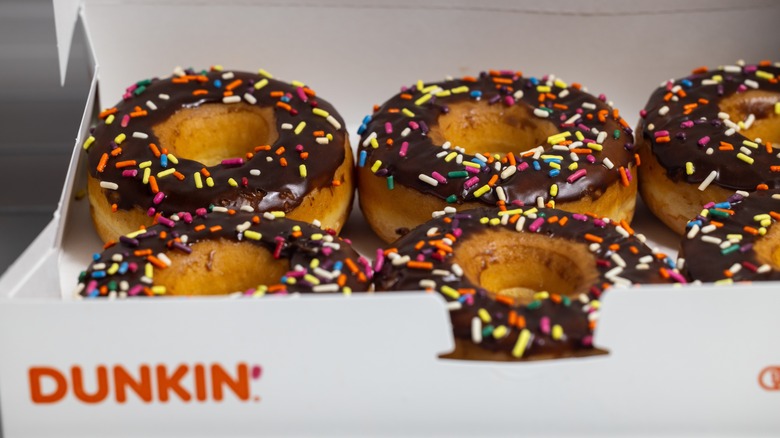What Makes An Old-Fashioned Donut Different From A Modern One?
Donuts (or doughnuts, to those outside of the United States) are the delectable outcome of centuries of culinary ingenuity, since Dutch immigrants first made olie koeken or "oil donuts" in the American colonies in the 1600s. Today, donuts range from the rough-edged, glazed, crispy old-fashioned donut to the frosted and creme-filled Long John, to the vibrant, limited-edition Dolly Parton donuts at Krispy Kreme, among many other popular types.
The concept of a donut has undoubtedly expanded over time, but what is it that distinguishes an old-fashioned donut from a modern one? If you were to taste both kinds of donuts you would certainly be able to see, feel, and taste the differences. Since what we refer to as an old-fashioned donut first surfaced in the 19th century, it's natural that the treat would evolve into various flavors and styles, but a lot of the differences between modern donuts and old-fashioned donuts are the result of changes in ingredients and the production process contemporary with the changes in technology and the food industry.
The defining features of an old-fashioned donut
An old-fashioned donut is not the oldest kind of donut, but it is called old-fashioned for a reason — it first surfaced in the United States in the 1830s, around the time the American Industrial Revolution started taking effect on food production. The ingredients in an old-fashioned donut reflect the changes the times began to see. While most original recipes call for yeast as a leavening agent, old-fashioned donuts were leavened with baking powder (which emerged in the 1850s), putting them in the category of cake donuts. Many recipes will also call for sour cream, which adds the perfect amount of moisture, fat, and acidity to round out the flavor and texture of the donut. After throwing it in the fryer, the old-fashioned donut will come out crispy on the outside, cakey and dense on the inside.
Apart from its unique texture, the most distinctive feature of an old-fashioned donut is its cracked surface and jagged edges. Old-fashioned donuts are fried at a lower temperature than other donuts, lending it this artisan, perfectly imperfect look. What's more, the cracks in the surface allow the donut to absorb more of that sweet, shiny glaze.
Dissecting the modern donut
An offshoot of old-fashioned donuts, modern donuts are a direct result of the modernization of food production. Think of the perfectly round, light and airy donuts at, say, Dunkin' or Krispy Kreme — two American companies that helped make donuts more widespread and readily available to consumers. To meet the demand of these multinational businesses, the donuts must be factory made for maximal efficiency, hence their more uniform appearance. Additionally, they are fried at higher temperatures and flipped all at once, ensuring they bake evenly all the way through.
The modern label also encompasses donuts with newfangled, unique flavors and ingredients. The mochi donut, made with the glutinous Japanese rice flour, emerged in Hawaii in the 1990s and have taken off ever since. There is also the popular Cronut—a croissant shaped like a donut—that became a staple at the Dominique Ansel Bakery in 2013. Donuts have come a long way from the traditional nutmeg and cinnamon-speckled treat, but there will always be a place for both the old and the new in the culinary world.


